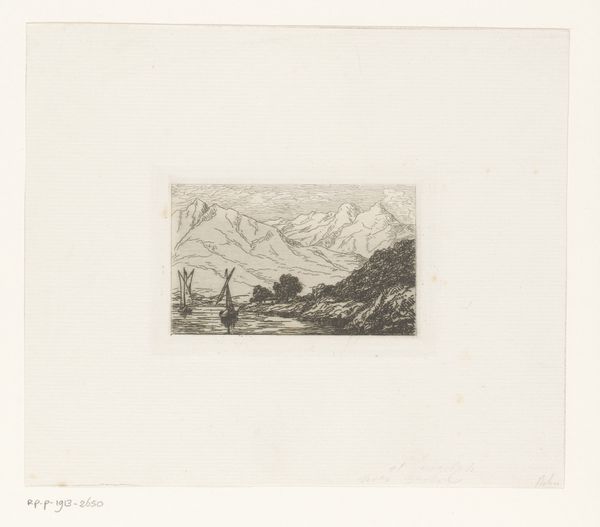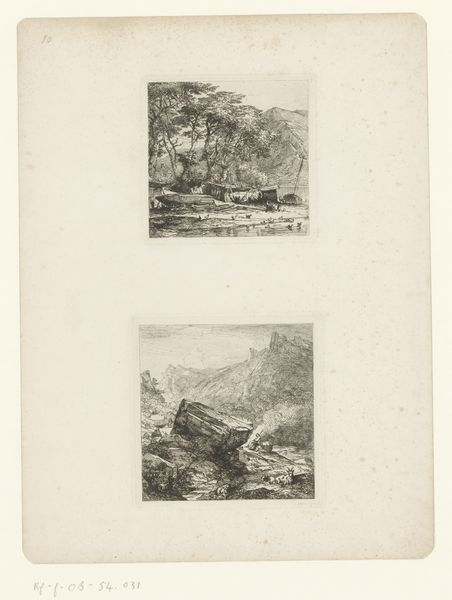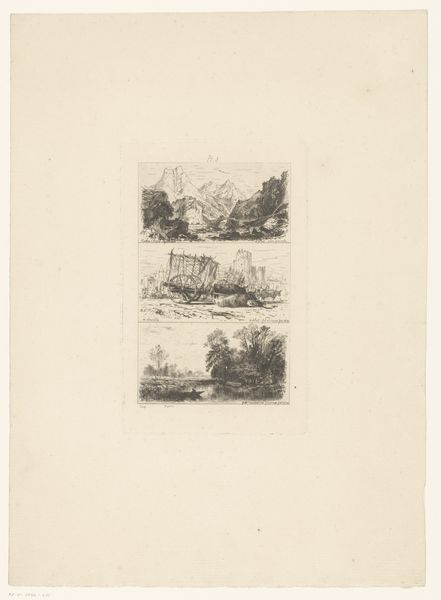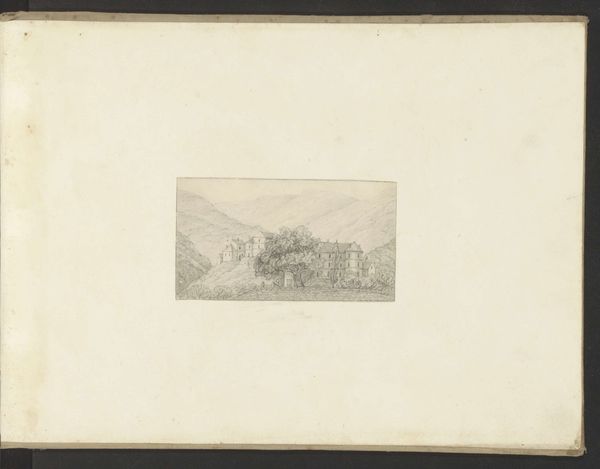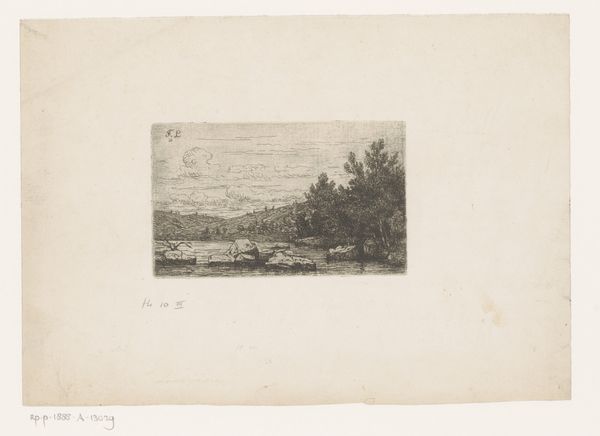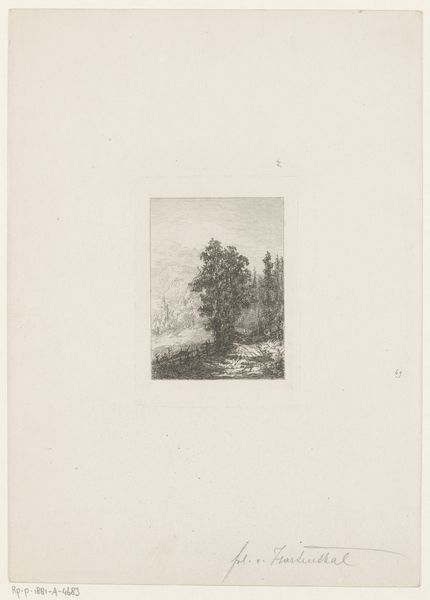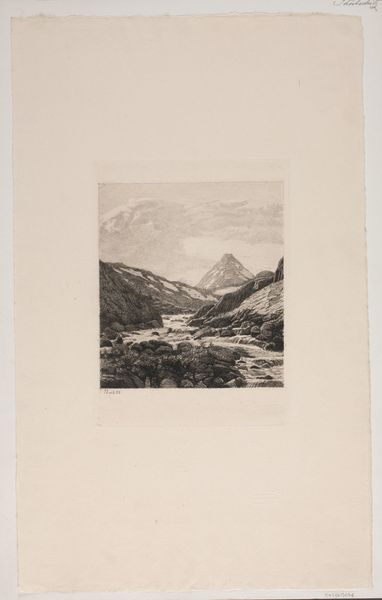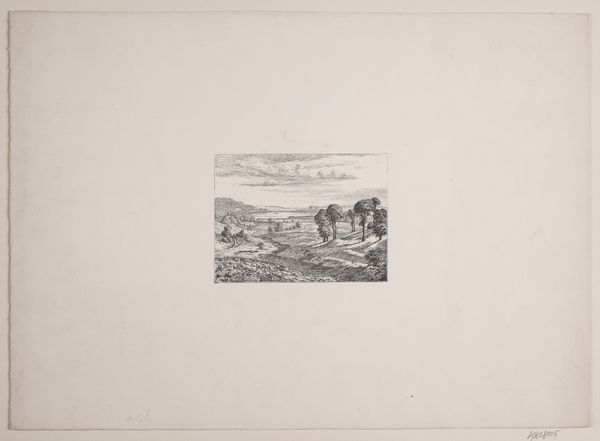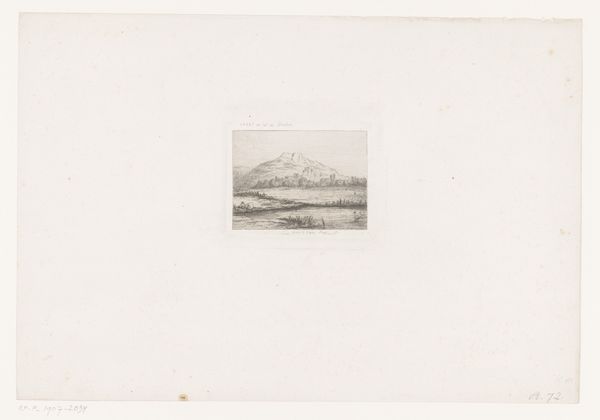
drawing, print, etching
#
drawing
# print
#
etching
#
landscape
#
forest
#
romanticism
#
mountain
Dimensions: height 322 mm, width 244 mm, height 65 mm, width 98 mm, height 65 mm, width 103 mm
Copyright: Rijks Museum: Open Domain
Curator: I find this etching by Johann Caspar Nepomuk Scheuren, titled "Twee voorstellingen" or "Two scenes," quite intriguing. It was created around 1842. Editor: Intricate work. My first thought is that the composition above feels grander, while the scene below reads as almost intimate, enclosed within those looming trees. Curator: Indeed. Scheuren was deeply immersed in the Romantic tradition. We should note the use of etching and how that choice impacts the look and feel of the artwork. Consider the time invested to render detail with such fine lines and controlled acid baths. Editor: Exactly! Think about the burgeoning print market during the mid-19th century. Etchings such as these made landscapes more accessible to the expanding middle classes and fuelled a fascination with the unspoiled natural world. The prints themselves became commodities in a sense. Curator: And this idea of the 'unspoiled world'… Look at the composition of each. He draws us into both views—inviting a feeling of awe at nature's sublimity while also positioning the viewer as the observer, perhaps even a colonialist. Editor: Interesting. And one could say these images further refined artistic tastes and even dictated the aesthetics around land management as Europe moved toward increased industrialisation and more people living in urban centres. They speak to our contemporary ideas about consumption and our troubled relationship with the natural world. Curator: Precisely, these were images seen within very specific cultural circles, affecting opinions on the relationship of humans to their landscape. Even seemingly benign idyllic images served to forward and shape values of its patrons. Editor: This pushes me to question: for whom were these idyllic, romantic landscapes being made and distributed? And what social narratives did they support or reinforce? Curator: Ultimately, I think, by exploring the material processes and production of imagery, one can expose how seemingly innocuous artwork served distinct cultural needs. Editor: A compelling point. Scheuren's work not only displays skilled artistic technique but functions as a cultural object that warrants further inspection.
Comments
No comments
Be the first to comment and join the conversation on the ultimate creative platform.
